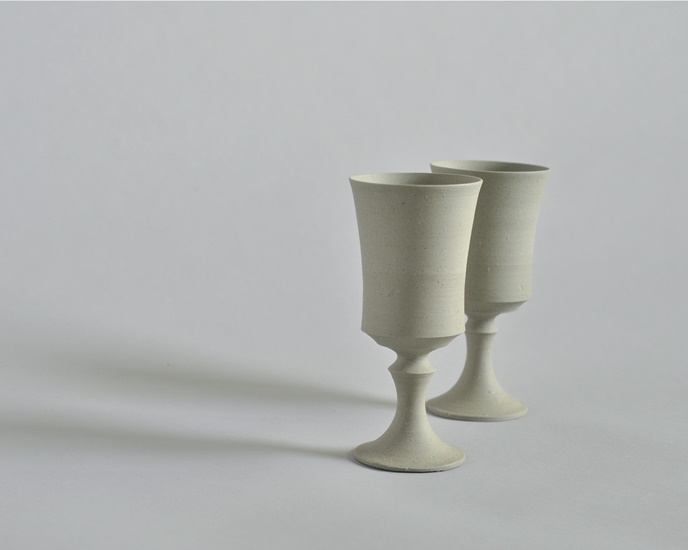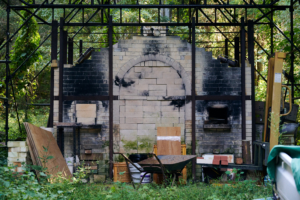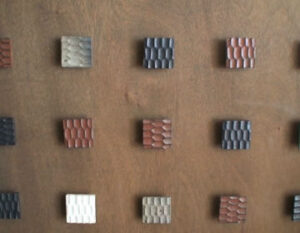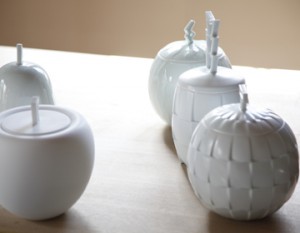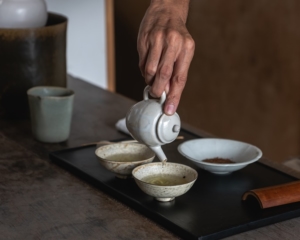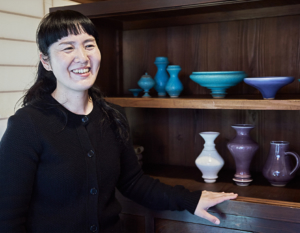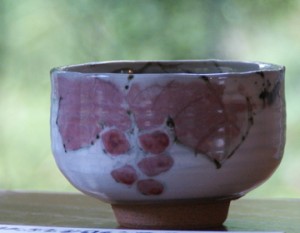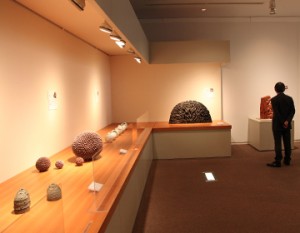Bizen Pottery is one of the Six Old Kilns, which have been in existence since the Middle Ages. Bizen Pottery is made of clay from the area around Bizen City in Okayama Prefecture and fired without glaze, giving each piece a different appearance. We visited the studio of potter Hitoshi Morimoto, who is trying to create modern pottery that fits in with today’s lifestyle while respecting the quality of Bizen-yaki.
Daily life is expressed in the work.

Located in the southeastern part of Okayama Prefecture, the Ibe district of Bizen City is the home of Bizen Pottery, where numerous pottery studios and galleries are located. Although located in the same city, potter Hitoshi Morimoto’s home and studio are located in a quiet mountainous area about 20 minutes away by car. Away from the hustle and bustle of the city and surrounded by abundant nature, he is devoted to his ceramic art.
Mr. Morimoto was born to a father who was a Bizen potter. After graduating from college with a degree in sculpture, he went to Gifu Prefecture to study under Mino potter Seiya Toyoba, who was recommended by his father. He lived and worked with his master for four years.
Mr. Morimoto recalls, “It was like the training of a Zen monk. I would wake up in the morning, help with cleaning and meals, tend the garden, chop firewood, and so on, all while keeping an eye on my master’s movements and moving accordingly. It was his mission to support his master so that he could work comfortably. In such a life, he realized that “daily life is a person’s work of art. This experience has become the foundation of what Mr. Morimoto is doing today.
Bizen ware that blends into modern life.

After training in Gifu, Morimoto returned to his hometown in 2003 and began working with his father as a potter. The period of time away from his hometown was a great accomplishment, as it allowed him to gain an objective view of Bizen Pottery. Twenty to thirty years ago, when Mr. Morimoto began his career as a ceramic artist, Bizen ware was dominated by pieces that emphasized a sense of stateliness. Therefore, when people tried to incorporate Bizen ware into their daily lives, they sometimes found it difficult to use. With this in mind, Mr. Kikuchi decided to create a new type of Bizen Pottery, one that was thinner, lighter, and easier to use in everyday life, while still retaining the texture of Bizen Pottery. With these thoughts in mind, the challenge to create Bizen ware that fits into modern life began.
Clay making and climbing kilns are the key to Bizen ware

The basic clay used for Bizen Pottery is “tado,” or rice field clay, collected from the rice paddies around Bizen City. Because of its high shrinkage rate when placed in the kiln, the clay is tightly fired. Because of this, water does not leak out, so glazing is not necessary. Another important feature is that the color changes depending on the placement in the kiln and the way the ash is applied, producing a variety of expressions.
The clay Mr. Morimoto currently uses was purchased by his father about 50 years ago. He crushes the clay, which is as hard as a stone, and dissolves it in water to make the clay to his liking. Because he does not use glaze for his pottery, he puts a lot of effort into making the clay, which greatly affects the finished product.
He believes that firing in a wood-fired climbing kiln is important to bring out the best of Bizen clay. The climbing kiln is fired once every one to one and a half years, and it takes seven to eight months from preparation to firing. Once the firing starts, he spends about a week at the kiln. When I keep the climbing kiln burning, I feel that I am working with pottery,” he says. The feeling of being moved is different from other kilns,” says Mr. Morimoto with a twinkle in his eye.
Continues to work on glazed items
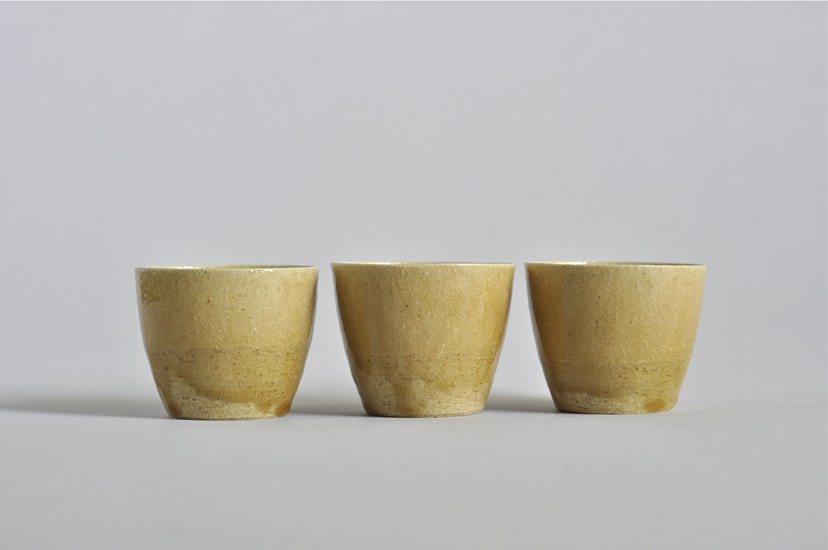
Morimoto continues to use a kerosene kiln to make glazed pieces that he learned from his master, alternating with Bizen ware made in a wood-fired kiln. The reason for this is very clear: “Having both makes the table more alive and interesting. He also says that working with both Bizen ware and glazed ware has been beneficial to him because it has allowed him to look at each piece objectively, even if it is his own work.。
Unique “White Flower” series fired in a kerosene kiln
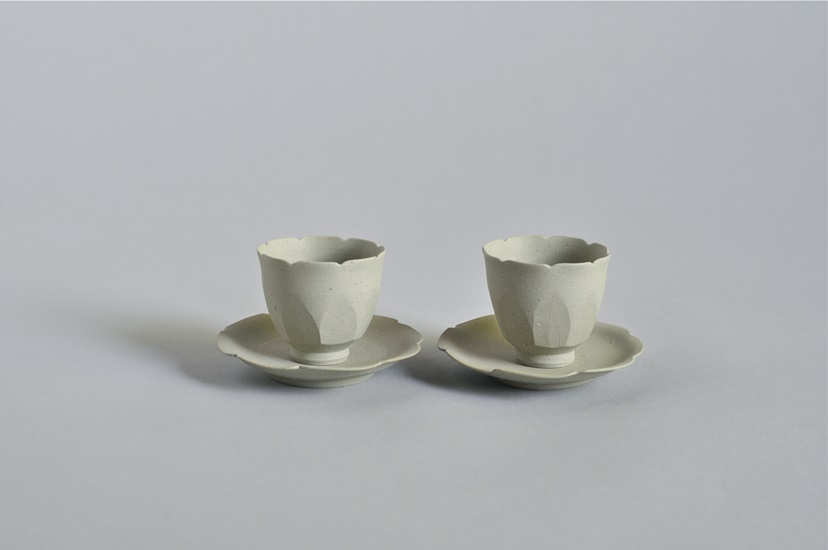
The “Shirahana” series, made of Bizen clay and fired in a kerosene kiln, is an original creation of Mr. Morimoto. Like traditional Bizen ware, these pieces are fired without glaze, but they are fired in a kerosene kiln to avoid browning as much as possible, which gives them a flat finish and a mysterious texture. The color is a grayish white, which is characteristic of Bizen clay itself. With its well-honed form and colors never before seen in Bizen pottery, this series has gained popularity for its modern look that blends seamlessly into modern life.
Thus, even if the same Bizen clay is used, different pieces will have completely different expressions depending on the kiln used and the firing method. Mr. Morimoto believes that what is important for pottery is the compatibility between the clay and the kiln. When the chemistry is right, interesting pieces are born. His lighthearted attitude of experimenting with various techniques without being bound by stereotypes is probably what leads to the creation of pottery with new charms.
What we want to do is born one after another.

In her daily life, she tends to her garden, decorates it with seasonal flowers and plants, and continues to learn the tea ceremony from her mother. He has also been learning tea ceremony from his mother. He is particular about the space he creates and each tool he uses in his workspace, and has made it so that he can devote himself comfortably to his pottery making. She continues to live a careful life, unashamed of the lesson she learned from her master: “It is in the way one lives that one’s work is expressed. In the course of her daily life, she sees many things and speaks with many people, and what she wants to do keeps coming up one after another.
When asked about his future, he replied, “There are so many things I want to do that I haven’t been able to digest them all. So I’ll just have to do one thing at a time. This is the driving force behind Morimoto’s pottery. In recent years, he has been receiving more and more work from overseas. The yakishime process is seen as modern by people overseas, and is gaining support. He is often asked to make large pieces, which he could not do in Japan even though he wanted to, and this is very rewarding.
My real work lies ahead.
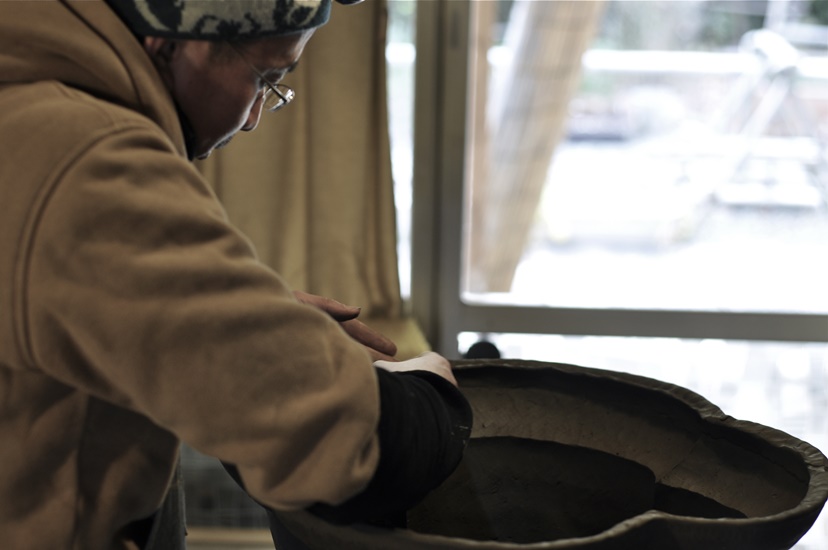
While experimenting with new things in this way, he intends to continue to produce compelling pieces of work, both Bizen ware and glazed ware, as a professional. On top of that, he says that his challenge is how to continue to enjoy ceramic art without getting bored or accustomed to it. Now that I have become able to do a certain amount of things,” Morimoto says, ”I think my real work lies ahead. He will continue to sublimate the teachings and techniques he inherited from his mentor and father into his own ceramic art, and will continue to expand the new world of pottery with lightness and flexibility.



